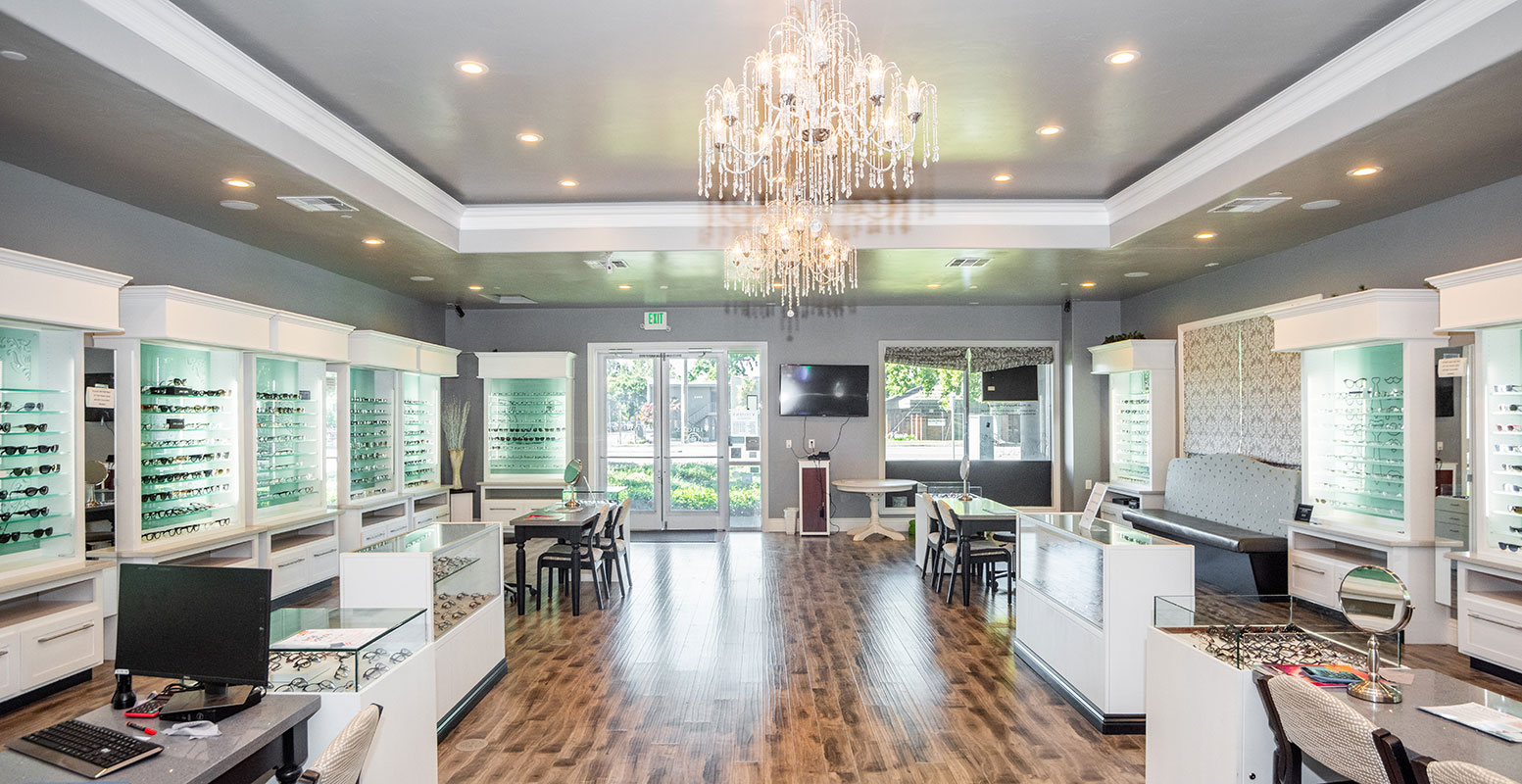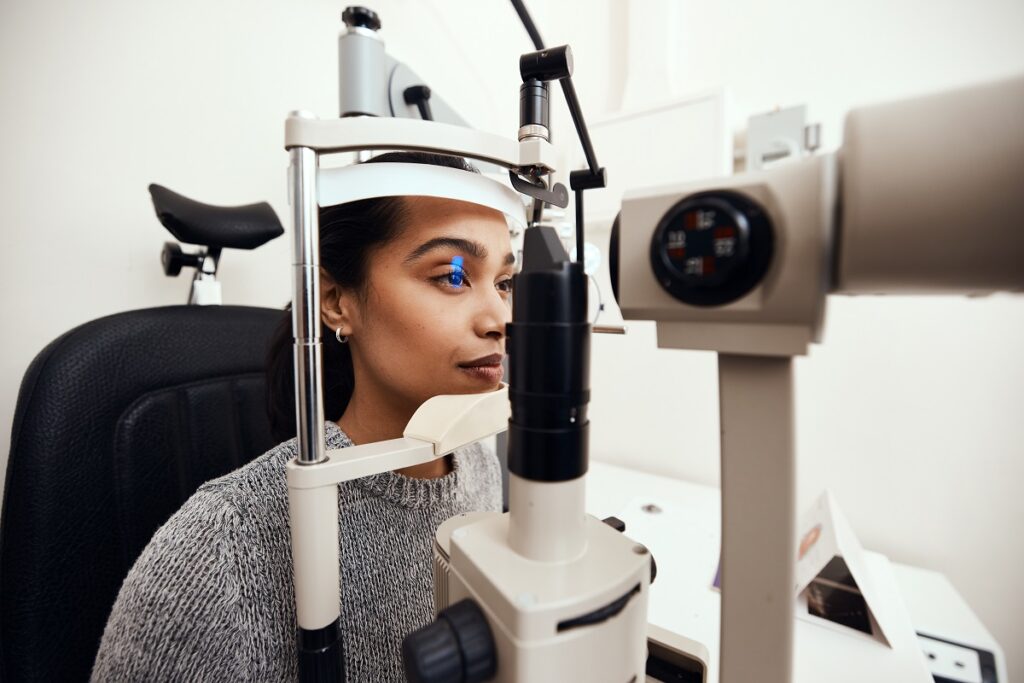The Value of Regular Examinations with an Eye Doctor Optometrist
Wiki Article
Discovering the most up to date Technological Developments in Optometry and What They Mean for Optometrists
From the precision of Optical Coherence Tomography to the nuanced insights supplied by AI-driven diagnostic tools, these technologies are setting brand-new criteria in individual assessment and therapy. As these advancements permeate the method, eye doctors are encountered with the difficulty of embracing these devices to boost patient results.Advancements in Diagnostic Equipment
Progressing the field of optometry, advancements in analysis devices have actually changed the way eye treatment experts analyze and identify aesthetic disabilities and ocular conditions. The previous decade has experienced substantial technological advancements, making it possible for even more accurate and extensive examinations. Optical Comprehensibility Tomography (OCT), for example, offers high-resolution cross-sectional pictures of the retina, allowing for the very early discovery of illness such as glaucoma and age-related macular degeneration. This non-invasive imaging method has come to be vital in modern optometric method.Another trick innovation is the introduction of sophisticated corneal topography systems, which map the surface area curvature of the cornea with precision. These tools are especially advantageous for suitable call lenses and diagnosing corneal conditions. Furthermore, digital retinal imaging has changed standard ophthalmoscopy, providing in-depth, scenic sights of the retina that help with comprehensive visual evaluations.
The growth of wavefront aberrometry has actually also been important, making it possible for the evaluation of refractive errors with unmatched accuracy (Optometrist Chino). This innovation assists in personalizing rehabilitative lenses and enhancing surgical results for refractive surgeries. Jointly, these analysis advancements encourage eye doctors to provide premium patient treatment, making sure early intervention and tailored treatment techniques, inevitably improving visual health results
AI in Person Monitoring
Structure on the structure of cutting-edge analysis devices, the incorporation of fabricated intelligence (AI) in person monitoring stands for a transformative leap for optometry. AI systems are increasingly employed to boost performance, accuracy, and personalization in person treatment.In addition, AI-driven systems facilitate structured individual interactions and administrative procedures. Automated scheduling, online appointments, and personalized follow-up plans not just enhance individual contentment yet also maximize time administration for specialists. These systems can triage individuals based upon the seriousness of their problems, guaranteeing that those in essential need obtain punctual focus.
Additionally, AI improves decision-making by giving eye doctors with evidence-based recommendations and therapy paths. By integrating information from digital wellness records, AI devices use insights that inform clinical choices, reducing the risk of mistakes and enhancing individual results. As AI proceeds to evolve, its role in person management will likely broaden, improving the landscape of optometric treatment.
Advances in Retinal Imaging
In the world of optometry, retinal imaging has experienced impressive technological developments that are enhancing analysis capacities and patient treatment. Technologies such as Optical Coherence Tomography (OCT) and fundus digital photography have reinvented exactly how optometrists analyze the retina and picture. OCT, specifically, offers high-resolution, cross-sectional photos of the retina, permitting the comprehensive exam of its layers. This capability is indispensable for early discovery and monitoring of conditions like glaucoma, diabetic retinopathy, and age-related macular degeneration.Boosted imaging modalities like OCT angiography are additional refining diagnostic precision. This non-invasive method maps blood circulation in the retina, offering vital understandings into vascular wellness without the demand for color shots. In addition, flexible optics modern technology is being integrated into retinal imaging systems to deal with eye aberrations, supplying unprecedented image quality. Such advancements help with the recognition of minute retinal changes that could represent condition progression.
Furthermore, developments in man-made knowledge are increasing retinal imaging by making it possible for computerized evaluation of big datasets. These systems assist eye doctors in recognizing patterns indicative of pathology, therefore enhancing analysis precision and performance. Jointly, these developments are transforming retinal imaging into a keystone of contemporary eye care, boosting end results and broadening therapeutic possibilities.
Teleoptometry's Growing Function
Teleoptometry is increasingly becoming an important part of eye care, driven by innovations in data and diagnostic tools. As optometry accepts digital change, click here for more teleoptometry helps with remote consultations, permitting optometrists to expand their services beyond typical boundaries. This is particularly useful in country and underserved areas where accessibility to specialized eye care is typically minimal. By leveraging high-resolution video conferencing and advanced retinal imaging, eye doctors can perform comprehensive eye examinations from afar, guaranteeing timely diagnosis and treatment.The integration of expert system (AI) further boosts teleoptometry, making it possible for the analysis of aesthetic information and assisting in the detection of ocular conditions such as glaucoma and diabetic retinopathy. AI-powered algorithms can rapidly analyze complicated imaging information, offering eye doctors with useful insights that boost clinical decision-making.
Furthermore, teleoptometry supports continuity of treatment via seamless integration with electronic wellness records (EHRs), enabling optometrists to preserve comprehensive individual backgrounds. This ensures that clients obtain individualized and constant care also when seeking advice from various experts.
Regardless of these benefits, obstacles stay, consisting of guaranteeing information protection and handling individual expectations. Teleoptometry stands for a considerable stride in the direction of more accessible, reliable, and patient-centered eye care. As modern technology progresses, its role is positioned to broaden better.

Future Patterns in Eye Care
A myriad of cutting-edge patterns is established to reshape the future of eye care, driven by technical advancements and the evolving demands of individuals. One substantial fad is the combination of expert system (AI) in diagnostics, which guarantees to enhance the accuracy and efficiency of eye assessments. AI formulas can assess vast quantities of data from retinal images, possibly discovering conditions like diabetic retinopathy and glaucoma earlier than typical techniques.Moreover, customized medicine is getting traction in optometry, with hereditary screening educating tailored therapy strategies. This strategy intends to optimize patient end results by customizing treatments to specific genetic profiles. Wearable modern technology, such as wise call lenses, is additionally imminent, supplying real-time tracking of intraocular stress or sugar levels, thus providing continuous insights right into systemic and ocular wellness.
The fostering of enhanced truth (AR) and virtual fact (VIRTUAL REALITY) in training and person education and learning is one more emerging fad. These technologies use immersive experiences that can improve understanding and skills both for optometrists and clients. As these patterns develop, optometrists must remain abreast of technical advancements to offer cutting-edge treatment, making sure better client results and complete satisfaction in the vibrant landscape of eye treatment.
Final Thought

Jointly, these analysis innovations empower eye doctors to provide premium patient care, making sure early intervention and customized treatment approaches, inevitably improving aesthetic wellness results.

As these technologies continue to evolve, optometrists have to adapt and integrate them right into technique, eventually enhancing process efficiency and boosting the criterion of eye treatment provided to individuals.
Report this wiki page